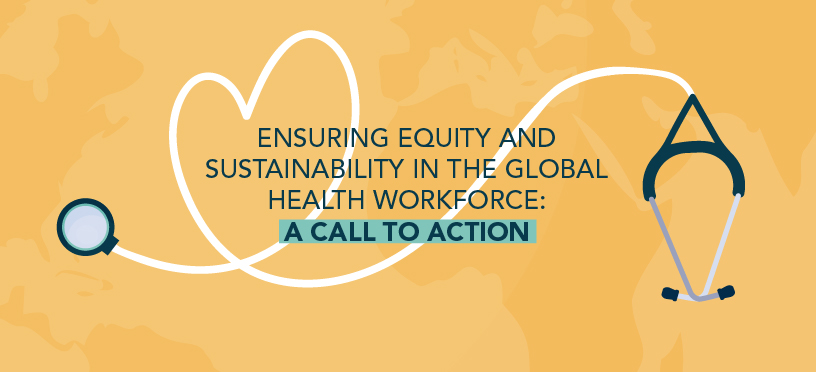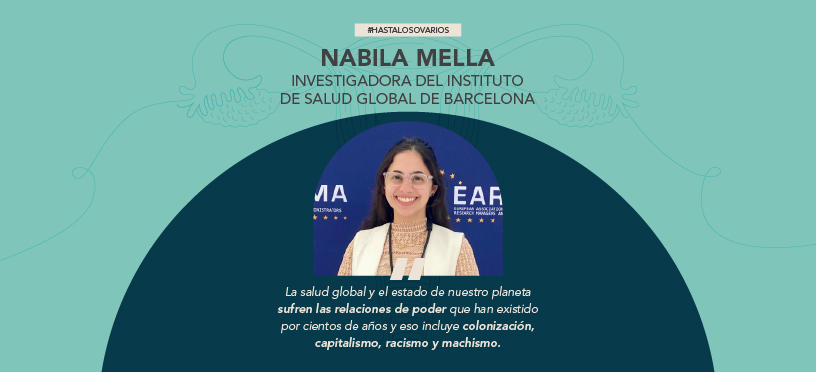Today’s discussions at the Global Health Workforce (GHW) Barcelona 2025 Conference (March 12th) on gender equity in universal health coverage (UHC), the recognition of community health workers, inclusive workplace policies, and preparing the next generation of health workers highlighted urgent priorities for global action.
Health workers (HWs) encompass all patient facing e.g. clinicians, nurses, midwives, community health workers, social workers, social health centers, and non-patient-facing e.g. lab staff, cleaners, administrative staff, and others working within both formal and informal health systems.
At Women in Global Health (WGH), we recognize that HWs are central to achieving UHC and sustainable health systems globally, and the numerous challenges they face. Women HWs comprise most of this workforce. They are the backbone of health systems worldwide, yet often face significant challenges: they remain underpaid, undervalued, and underrepresented in leadership positions.
We believe that the empowerment of women HWs is essential for building sustainable and effective health systems. This includes equal opportunities, safe working conditions, and prioritizing their health and well-being. By addressing the systemic barriers women HWs face, we can unlock their full potential to lead, innovate, and deliver high-quality care. We call on local and national governments, international bodies, NGOs, civil society, academia, industry, and health systems actors to ensure a more equitable and sustainable health system, by prioritizing the empowerment of women HWs and addressing the broader challenges faced by all HWs.
This requires not only recognizing the contributions of women HWs, but also implementing policies that support their career advancement, safety, and well-being. To this end, leaders worldwide should prioritize the following four critical issues, each with gender as a core dimension:
THEME 1: GENDER EQUITY
- Close the Gender Pay Gap: Governments and institutions must ensure equal pay and promotion opportunities for women.
- Promote Leadership Development and Representation: Ensure balanced representation at all levels for women HWs, and equip ALL (women and allies) with essential knowledge, leadership skills, and mentorship to navigate progression within the evolving healthcare system.
- Protect HWs from Violence and Discrimination: Enforce strict policies against workplace violence, harassment, and burnout, including protection from racism, LGTBIQ+ phobia, and sexism. Adopt zero tolerance policies for discrimination, sexual harassment, gender-based and all types of violence.
- Promote sexual and reproductive health and rights for all: Ensure equitable access to quality services in an integrated way addressing health needs through the life course of women from access to contraception, pregnancy, lactation, through menopause.
- Reduce horizontal and vertical segregation: generate political will and commitment from institutions.
THEME 2: COMMUNITY HEALTH WORKERS AND OTHER INFORMAL HEALTH WORKERS
- Formalize and Integrate Community Health Workers (CHWs) Employment: Provide legal status, fair wages, and social and labour protections for CHWs, migrant and refugee populations without legal status. Integrate CHWs into national health strategies (from informal to formal) with career progression opportunities, comprehensive training to empower them in voicing their needs, and implement certification programmes. “The 4 Ss: Salaried, skilled, supervised and supplied.”
- Ensure a Fair Distribution of Resources: Provide adequate equipment for self-protection (such as personal protective equipment), human resources for supervision, and financial support to sustain CHWs’ critical work in underfunded and high-risk environments.
- Adopt Workforce Policies Centered on diversity, equity, inclusion, and accessibility: Embed these principles in hiring practices, leadership pipelines, and workplace protections across all health institutions. Health centers must be inclusive and adapted to all capacity needs. An intersectional lens must be used to include gender, age and different abilities, among other factors, at workplaces.
- Provide safe and healthy working conditions: Ensure working conditions are conducive to the protection of workers health and safety, including environment and climate resilience (the ability to anticipate, prepare for, and respond to hazardous events, trends or disturbances related to climate).
THEME 3: EDUCATION AND WORKFORCE TRAINING
- Equitable Access to Education and Training: Ensure access to knowledge; offer scholarships, professional development opportunities, and technical training to women, communities, and individuals in low-resource settings. Training with an international gender perspective is key to all professionals.
- Access to Digital Health Solutions and Emerging Threats Training: Provide the resources and training needed to make digital innovations, artificial intelligence (AI), and telemedicine accessible to all HWs. Train HWs in emergency response, interdisciplinary collaboration, and innovation to address future crises.
- Promote the Ethical Use of AI: Develop AI transparently, ethically, and inclusively to prevent biases that could reinforce health inequities.
THEME 4: WORKING CONDITIONS
- Implement Gender-Responsive Policies and Support Work-Life Balance: Implement paid parental leave, flexible work policies, and childcare support to prevent career stagnation among women.
- Address Mental Health and Ensure Fair Working Conditions: Recognize mental health as a core issue for HCWs by identifying organisational psychosocial risks, designing organisations to mitigate this risk, and by offering targeted psychosocial support, counselling and peer-support networks. Enforce supportive working conditions such as fair working hours, rest periods, paid sickness absence and paid leave to mitigate risks of burnout. Offer specific support to HCWs experiencing violence and harassment at work.
- Strengthen Funding: Invest in sustainable health systems through long-term funding for human resources, education, and retention strategies.
THEME 5: CROSS-CUTTING ISSUES
- Multisectorial collaborations and political influence: Avoid working with only the health sector. Create Equity Observatories and public policies from a holistic and gender view.
- Data collection: disaggregation of sex and gender data in health research, and inclusion of gender and other factors that might lead to discrimination, in a participatory and respectful manner.
- Promotion of peace: there is no possible health in conflict areas and wars. Adopt a zero tolerance approach to any armed conflict attempting the lives of HWs and all peoples.
- Funding: Find innovative and equitable sources of funding to bridge the salary gap between men and women, and between different health worker cadres, and to ensure resilient and sustainable health systems.
- Allyship: Engage men and all genders in the cause for gender equality.
- Ensure Occupational health and safety measures and training for HWs: The Global Health Workforce needs to be protected from workplace hazards. There can be no effective healthcare system without a healthy workforce and the measures that protect HWs from injury and illness also serve to protect patients’ health and safety.





